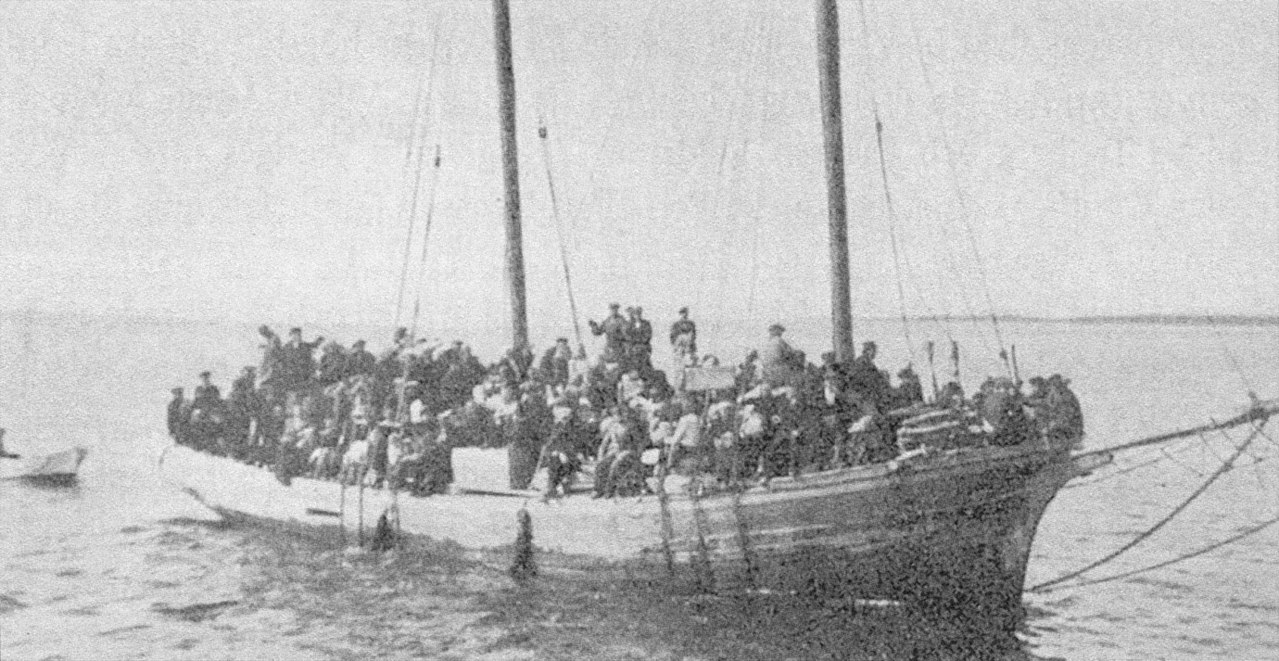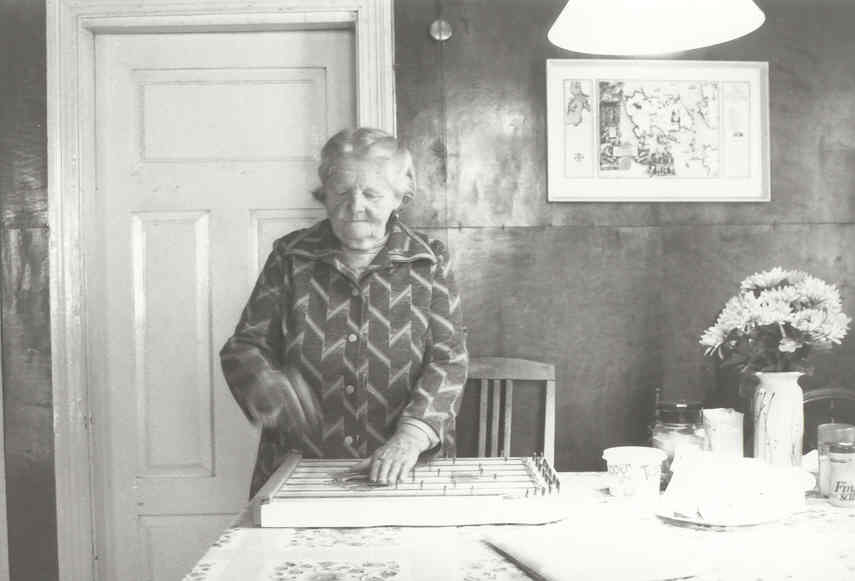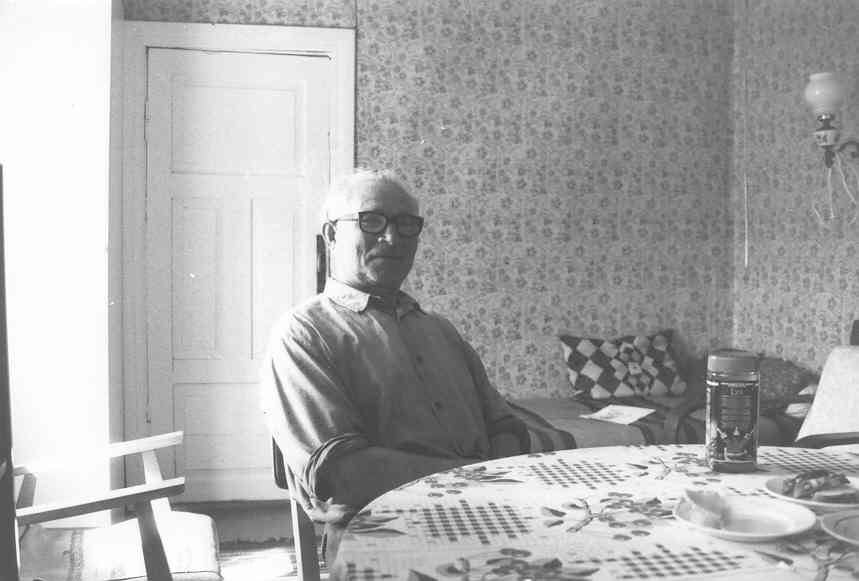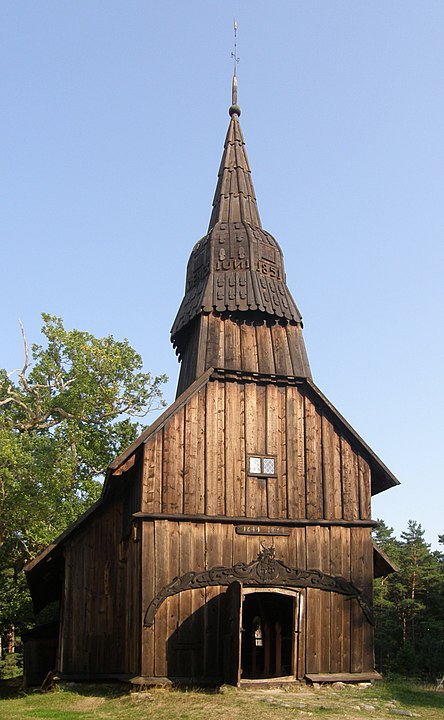Pockets of languages survive all over the world largely due to the efforts of the native speakers and their resilience. These groups add to the richness, not only of the country in which they reside, but also to the entire world. Our curiosity led us to research language minorities and the first group we looked at are Swedish Estonians. Estonia and Finland share many commonalities but the 20th century took them down very different paths.
 Swedish Estonians fleeing to Sweden in 1944.
Swedish Estonians fleeing to Sweden in 1944.
by Karen Anderson
During the Middle Ages, the Vikings from Sweden established control far beyond the borders of modern-day Sweden. In the early 1500’s the Swedish Empire included Norway, Denmark, Finland, parts of northwestern Russia, and the coastal communities of the Baltic Countries, extending as far south as northern Poland and Germany. The Swedish Vikings no doubt crossed the Baltic Sea to Estonia or entered from northern Finland. Sweden dominated the region for several centuries. Estonia was under the rule of the monarchy of Sweden until the early 1700’s and was known as Svenska Estland (Swedish Estonia). At that time, the three languages spoken were Estonian, German, and Swedish.
In 1721 the Swedish rule of Estonia came to an end when it was ceded to Russia under the terms of the Treaty of Nystad. From then until World War II, Estonia faced many challenges. Food at times was scarce; Germany and Poland made attempts for territory. Ultimately, Russia prevailed, dominating the culture, including demanding people speak Russian in school and in government. Nevertheless, Estonians continued to also speak their native language, which is a language of Finnic linguistic roots, as did the Swedish-speaking populations who lived primarily on farms on the larger Estonian islands, as well as in fishing villages in island coastal areas.
 Marie Murman (1911–2004), an Estonian Swede, remained in Estonia on the island of Ormsö. Photo by Harri Blomberg 1994.
Marie Murman (1911–2004), an Estonian Swede, remained in Estonia on the island of Ormsö. Photo by Harri Blomberg 1994.
 Oskar Friberg, the last male Swedish Estonian on the island of Ormsö, outlasting the Soviet occupation. Photo by Harri Blomberg 1993.
Oskar Friberg, the last male Swedish Estonian on the island of Ormsö, outlasting the Soviet occupation. Photo by Harri Blomberg 1993.
After years of struggle, the Estonians became an independent nation in 1920 when the Tartu Peace Treaty was signed with Russia. Although not without economic and political challenges, Estonia was thriving independently until the early signs of war with Germany in the late 1930’s. As it became apparent to the Estonians that the German Army was advancing, during 1943 and 1944, approximately 6,000 Swedish Estonians fled, the vast majority going to Sweden. They fled by any means possible, even if it meant boarding small fishing boats for the 200 nautical miles journey to Sweden. Some may have made their way to Sweden through Finland or stayed in Finland, with the majority settling in Sweden. Most were absorbed into the Swedish culture, but many settled near each other in northern Sweden. A small number, little more than 1,000, remained in Estonia.
In the years following World War II, there were some who left Sweden to join the small number of Swedish Estonians who remained in Estonia and to reclaim the farms they left when they fled. Most of the coastal areas which provided the livelihoods for the fishermen were destroyed during the war. Those who remained in Sweden remain connected through many organizations there.
 A stave church built in 1644 on the island of Runö. Prior to WWII Swedish Estonians made up the majority of the island’s population.
A stave church built in 1644 on the island of Runö. Prior to WWII Swedish Estonians made up the majority of the island’s population.
Currently, it is estimated there are about 300 Swedish Estonians spread out among the largest islands of Estonia. For most, Haapsalu, a resort town, is considered their unofficial “capital”. Located there is the Albolands Museum which provides not only their history, but is often a meeting place for gatherings as are some smaller museums and local churches in the areas where the Swedish Estonians reside. It is not surprising the language of the Swedish Estonians has changed as it has evolved over 700 years, with many Estonian dialects and word variations infused into it. Although Swedish was the root language, currently, the Estonian Swedish is difficult for a native Swedish speaker to understand as it has evolved into a very unique language.
Swedish Estonian Organizations
Maps of Swedish Estonia—this is an Swedish Estonian organization in Sweden
https://estlandssvenskarna.org/historik/gamla-kartor-over-svenskbygden/
Estonian Swedes Cultural Administration
https://www.eestirootslane.ee/sv/
Swedish St. Michael’s Church in Reval, Estonia
Pro tip: click on the British flag for English—it’s little and easy to miss
http://www.stmikael.ee/index.php/en/
Museum about Estonian Swedes in Haapsalu
https://www.aiboland.ee/
Further Reading:
https://estonianworld.com/life/estonians-swedes-go-back-long-way/
https://wwwp.familysearch.org/wiki/en/Estonia_Languages
https://www.newstatesman.com/culture/2014/12/minority-report-plight-estonia-s-ethnic-swedes